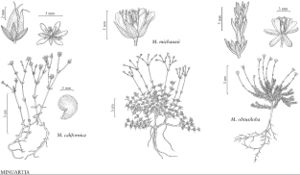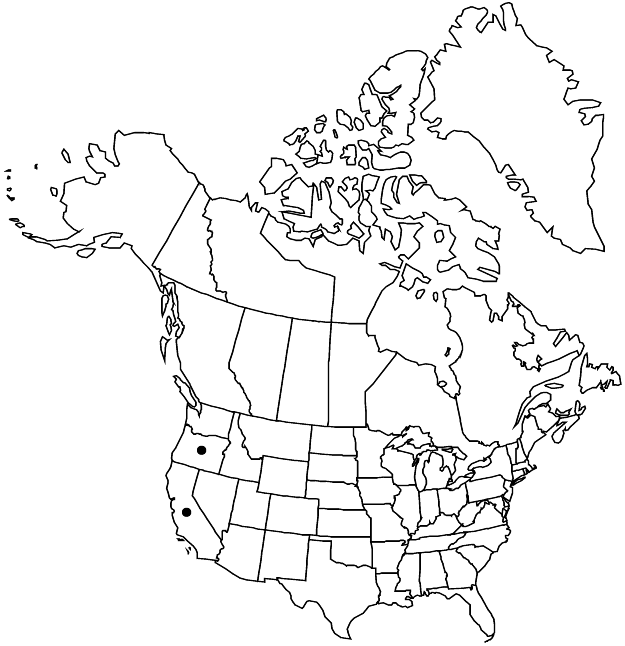Minuartia californica
Bot. Jahrb. Syst. 57(Beibl. 126): 28. 1921.
Plants annual. Taproots filiform. Stems widely spreading to erect, green, (1–) 2–12 cm, glabrous, internodes of flowering-stems 5–10 times as long as leaves. Leaves not overlapping, all evenly spaced, connate proximally, with loose, herbaceous or scarious sheath 0.5–0.7 mm; blade widely spreading, green, concave proximally, flat distally, weakly 1-veined abaxially, linear to awl-shaped or narrowly oblong, 2–5 × 0.2–1.5 mm, flexuous, margins not thickened, scarious proximally, smooth, apex green or purple, acute to often rounded, flat, dull to shiny, glabrous; axillary leaves absent. Inflorescences 5–7 (–9) -flowered, open cymes, or rarely flowers solitary; bracts subulate, herbaceous, often scarious-margined proximally. Pedicels 0.2–1.5 cm, glabrous. Flowers: hypanthium disc-shaped; sepals 1–3-veined, midvein sometimes more prominent than lateral-veins, broadly lanceolate to elliptic (herbaceous portion narrowly elliptic to oblong), 2.5–2.8 mm, not enlarging in fruit, apex green to purple, rounded to acute, slightly hooded, glabrous; petals elliptic to oblanceolate, 1.5–1.8 times as long as sepals, apex obtuse to rounded, entire. Capsules on stipe ca 0.1 mm, ± ovoid, 3–3.5 mm, longer than sepals. Seeds reddish-brown, suborbiculate with radicle prolonged into beak, slightly compressed, 0.4–0.5 mm, minutely papillate. 2n = 26.
Phenology: Flowering spring–summer.
Habitat: Gravelly or sandy slopes, meadows, chaparral, vernal ponds, roadsides
Elevation: 10-700(-1500) m
Discussion
Selected References
None.

